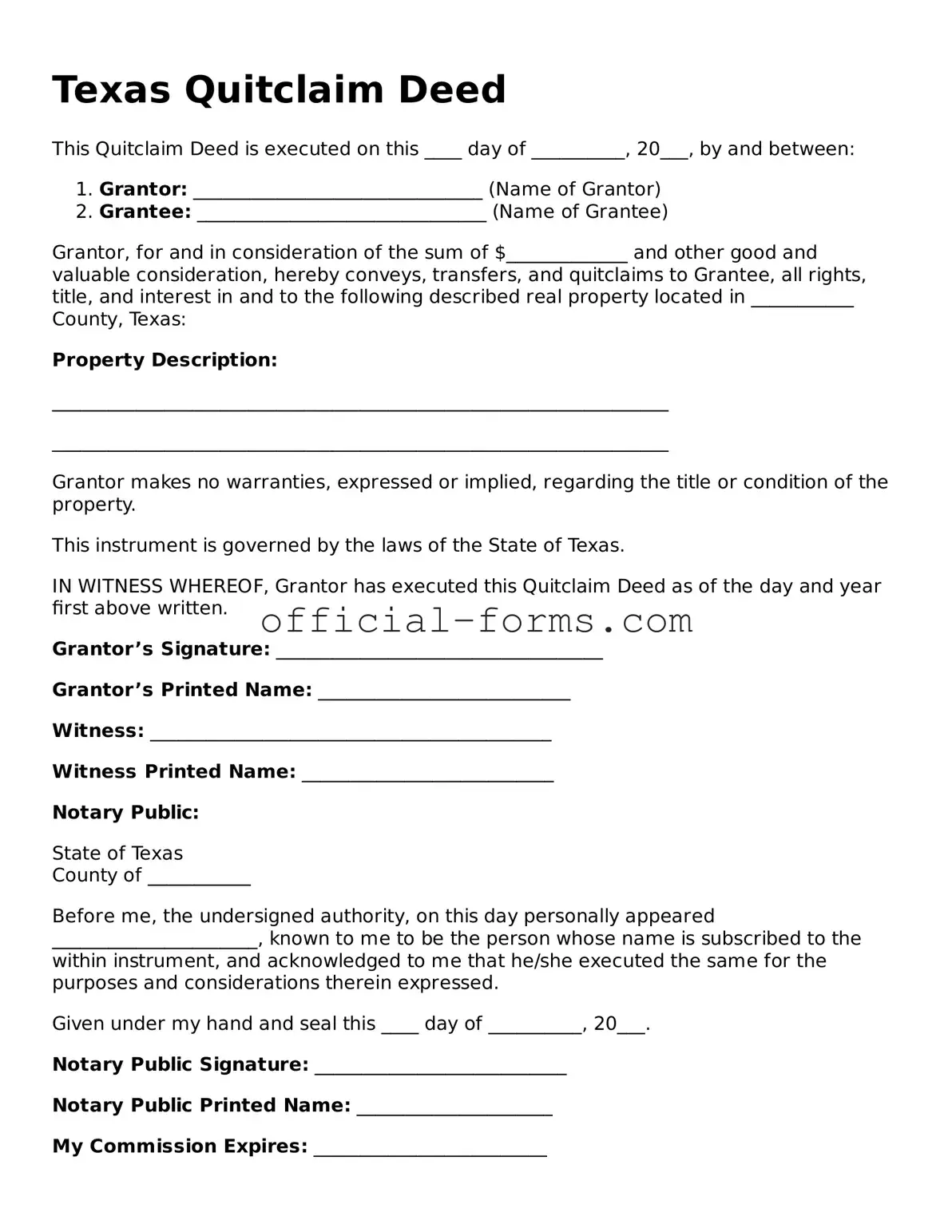Official Texas Quitclaim Deed Document
A Texas Quitclaim Deed is a legal document that allows a property owner to transfer their interest in a property to another party without making any guarantees about the title. This form is often used in situations where the parties know each other, such as between family members or in divorce settlements. Understanding how to properly use this deed can simplify the process of transferring property rights in Texas.
Open My Quitclaim Deed Now
